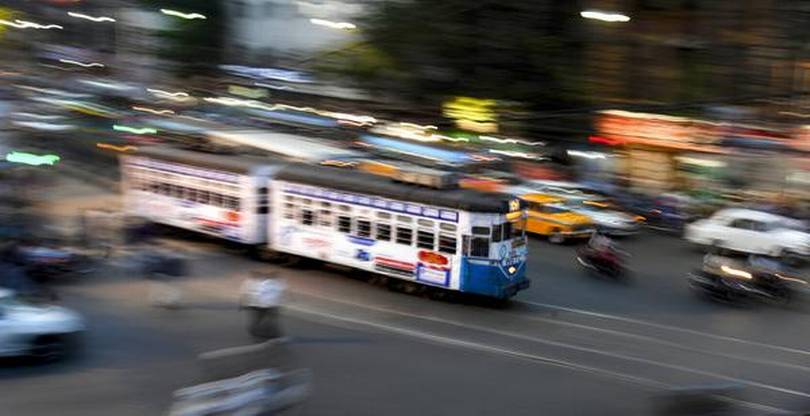The city’s trams may have been sidetracked by taxis and buses, but they soldier on carrying passengers and a proud legacy
As he drives a tram through the busy streets of Kolkata, Dinesh Singh keeps a watchful eye for yellow taxis. When he started work 35 years ago, Mr. Singh, who is from Uttar Pradesh, did not have to worry so much. The electric cars ran smoothly on dedicated lines with nothing coming in their way. But now, vehicles running on fossil fuels have gained the upper hand.
The trams may not have kept pace with the city’s fast life, but they refuse to roll down into the sunset. Making slow progress through busy streets without leaving a smoky trail, the trams offer a ride down history. Running continuously since March 27, 1902, the Kolkata trams make up one of the oldest transport systems in Asia. “Earlier, tram lines used to be separate from the regular traffic. But as the city grew, those lines were merged with the main traffic routes. Hence, tram services run even more slowly now. Youngsters no longer prefer it, and it is only the elderly passengers and women who still use it,” says Uma Shankar Sharma, who has a history with trams. The 59-year-old took up driving trams after his father completed 40 years of service piloting them through the city’s streets.
Bombay, Madras, Delhi and Karachi have no trams now, though the British introduced them in these cities also. Exuding an old-world charm and nostalgia, the slow-moving, eco-friendly transport system is part of Kolkata’s charm. The Calcutta Tramways Company was registered in London in 1880. The British managed it even after Independence. In 1967, the West Bengal government took over the operations. But as time passed, taxis, private buses and India’s first metro simply outpaced the trams. The tram tracks became a casualty of rapid urbanisation. Many tracks were removed. The slow speed, infrequent timings and failure to change network patterns worked against trams. The tramway corporation even introduced bus services to increase its revenues.
Indrajit Singh, a timekeeper at the Esplanade tram depot, says only 10% of the tram lines in existence in 1995, when he joined service, are functioning now. He cites the expansion of the metro and other means of transport as the reason for the decline. The depot, from where the first electric tram car in Asia was run, today houses a tram museum and a cafe, serving history buffs and tourists. A 2011 study by the University of Calcutta said improving Kolkata’s tramways would have greater economic and environmental benefits than replacing it with other means of transport such as buses.
source: http://www.thehindu.com / The Hindu / Home> News> Cities> Kolkata / by K.R. Deepak / April 21st, 2018
